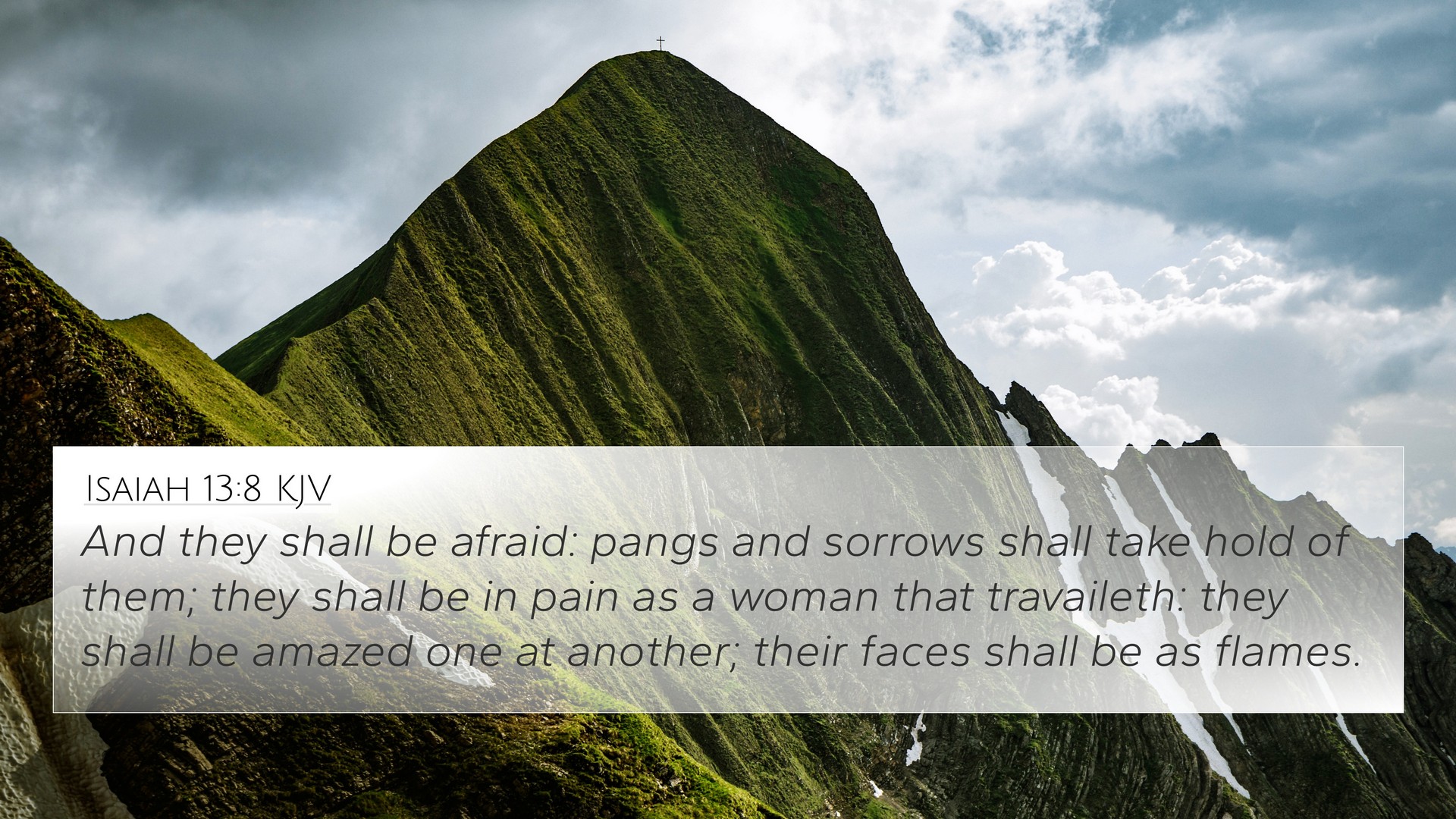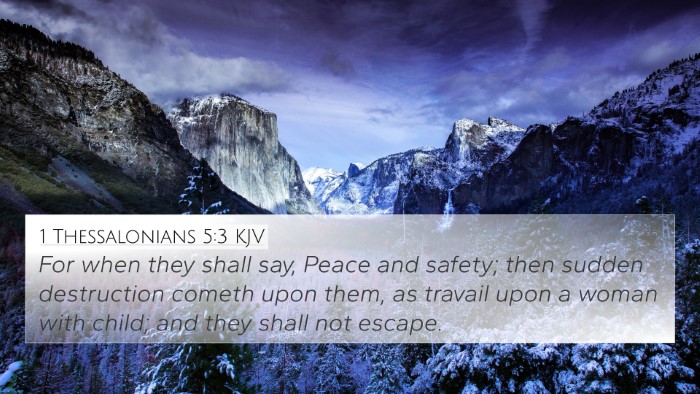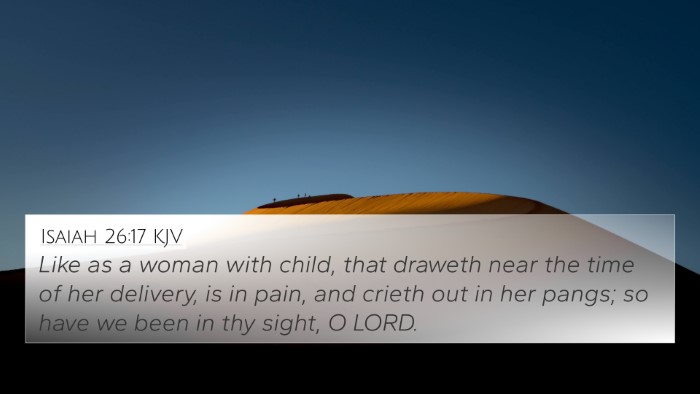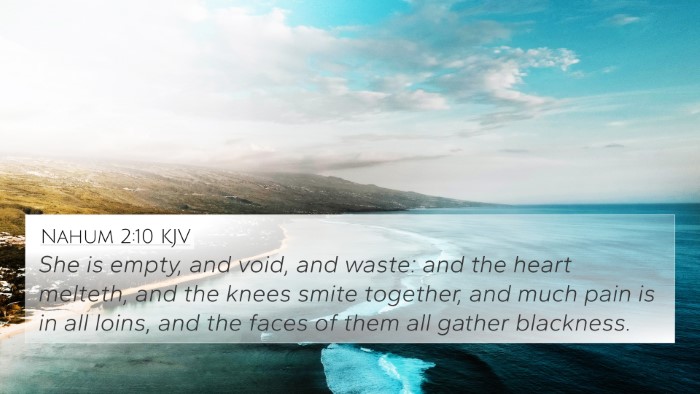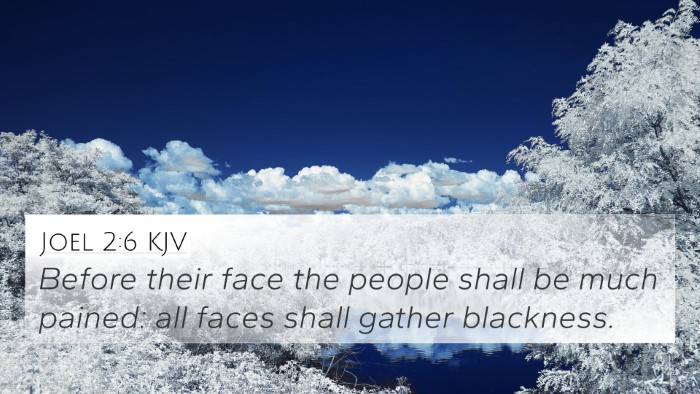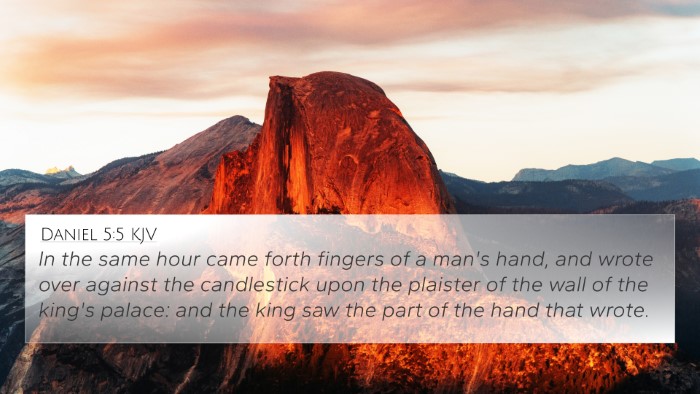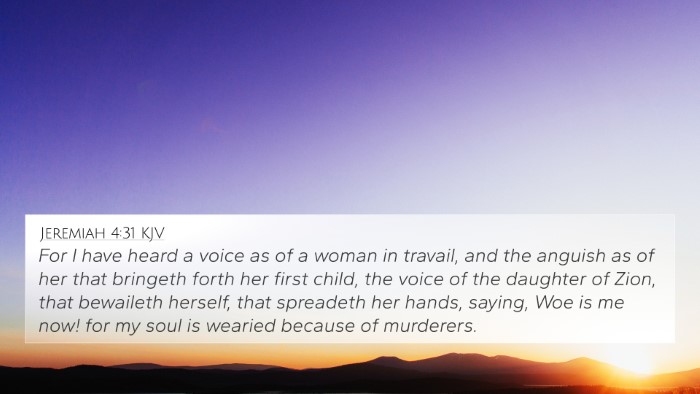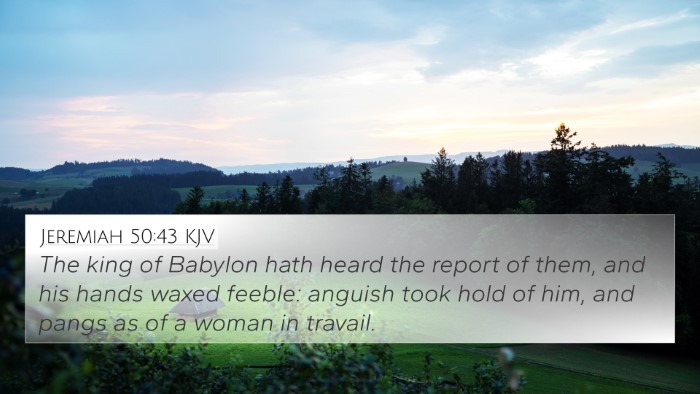Understanding Isaiah 13:8
Isaiah 13:8 states: "And they shall be afraid: pangs and sorrows shall take hold of them; they shall be in pain as a woman that travails: they shall be amazed one at another; their faces shall be as flames." This verse is part of a larger prophecy concerning the impending judgment against Babylon, illustrating the extreme distress that will overcome the people.
Summary of Biblical Context
This verse vividly depicts the anguish that will strike the people due to the divine judgment. The imagery of a woman in childbirth conveys intense suffering and fear, indicating that the situation will be fraught with terror and despair.
Commentary Insights
- Matthew Henry's Commentary: Henry emphasizes that the emotional state of the people reflects God’s displeasure. Their terror is heightened by the realization of their impending fate as Babylon faces destruction, signifying that they will be overwhelmed by the calamities set upon them.
- Albert Barnes: Barnes connects this verse to the idea of natural disasters and societal collapse. He suggests that the pangs mentioned are akin to those experienced during times of upheaval, where chaos reigns and the normal state of life is shattered.
- Adam Clarke: Clarke highlights the image of the woman's travail as indicative of a new birth, suggesting that while the people will suffer, this period of unrest may lead to significant transformation in the future, echoing themes of pain preceding restoration.
Key Themes and Connections
The themes of divine judgment, human anguish, and the metaphor of childbirth appear recurrently throughout Scripture, creating an inter-Biblical dialogue. Below are some significant connections:
- Jeremiah 30:6-7: References to the "pangs of a woman in labor" illustrate the imminent disaster that is akin to what Isaiah describes.
- Matthew 24:8: "All these are the beginning of sorrows," connecting the theme of birth pains to the broader implications of suffering before the end times.
- 1 Thessalonians 5:3: States, "For when they shall say, Peace and safety; then sudden destruction cometh upon them, as travail upon a woman with child," tying the idea of sudden calamity to labor pains.
- Revelation 12:2: The woman in labor imagery reappears here, symbolizing the struggle and pain associated with spiritual warfare and eventual victory.
- Isaiah 26:17: "Like as a woman with child that draweth near the time of her delivery," indicating the inevitability of tribulation leading to renewal.
- Psalms 48:6: "Fear took hold upon them there, and pain, as of a woman in travail," reinforcing the concept of fear in the face of divine judgment.
- Micah 4:9-10: References to the birth pains of the nation of Israel serve to underscore the transformative power of suffering.
Inter-Biblical Dialogue
Through cross-referencing Biblical texts, we begin to see a tapestry of themes including judgment, suffering, and eventual hope. The connections drawn from Isaiah 13:8 extend beyond mere prophecy, reaching into the Gospels and the New Testament letters, where the motifs of pain and promise coexist.
Effective Cross-Referencing Tools
Studying these connections can be enriched through tools for Bible cross-referencing, such as:
- Bible Concordance: A necessary resource for finding specific verses.
- Bible Cross-Reference Guide: Helps link similar themes found in different verses.
- Cross-Reference Bible Study: Methodologically linking Bible scriptures enhances theological understanding.
- Bible Reference Resources: Comprehensive listings are vital for deeper textual analysis.
- Bible Chain References: Creating connections between verses in a thematic manner aids in grasping complex ideas.
Conclusion
Isaiah 13:8 serves as a profound reminder of the consequences of divine judgment coupled with the hope of transformation. The use of childbirth imagery effectively communicates the intensity of the situation. By employing comparative Bible verse analysis and thematic Bible verse connections, we uncover the rich and complex dialogues present in Holy Scripture, allowing for a deeper understanding of its messages and meanings.
